The Idea
Our failure to guarantee that we have a place to relieve ourselves when the need arises seems trivial until we need one. Then you realize that, without a doubt, this is a much more important issue than is commonly realized. It is also a vivid example of the sharp differences in access to the necessities of life among the members of our different classes and a powerful indictment of our current social and political system. If we can’t acknowledge the most indisputable of our commonalities, how can we ever confront and resolve the more complex and difficult challenges that confront us?
A Plan:
Governments are, as a rule, not interested in trying to provide these facilities to the public if they can help it. They are expensive to construct and maintain, possibly messy, and frankly embarrassing. It is preferable to ignore the issue and leave the private sector to carry the burden. If you are well-heeled and well-dressed there are always plenty of places to find relief. If not, there are not. As the population ages, this has gone from a problem to a catastrophe and can not be allowed to continue as it is any longer.
In some major European cities, like Paris and London, it has been the rule to provide attended and ubiquitous facilities for many decades. The health risks that accompany ignoring this issue are obvious and unavoidable. The means to provide enough political pressure to change these conditions are not easily generated. Using income from toilet-mounted billboards to pay the freight has not worked here, replacing one form of pollution with another. More creative and effective strategies are needed and they are obvious:
Combine public toilets with other vending and income-generating opportunities so that these locations can be attended and of the highest quality
Incentivize restaurants and those others with existing facilities to make them more widely available
Establish a program of both urgent and regular maintenance to relieve these more accessible locations of the most burdensome aspects of this situation
A network of support groups, including public health, homelessness, community, and human-interest organizations can combine their influence to establish an effective force to confront this issue and deal with it successfully. Some international groups are already working to raise awareness and concern about this. They need to be bolstered by other forces, both local and large like hospitals and doctors organizations as well as potentially influential individuals. This may not be a glamorous matter but it touches everyone and is a measure of our willingness, as a society, to put aside our embarrassment and deal with our most universal problems.
World Toilet Day
Friday, November 19, 2021.
Valuing toilets
“Who cares about toilets? 3.6 billion people do. Because they don’t have one that works properly.“ That is the starting point of this 2021 Campaign for World Toilet Day. The Observance celebrates toilets and raises awareness of the 3.6 billion people living without access to safely managed sanitation. When some people in a community do not have safe toilets, everyone’s health is threatened. Poor sanitation contaminates drinking water sources, rivers, beaches, and food crops, spreading deadly diseases among the wider population.
Continue reading on UN World Toilet Day page.

Photo by UN-Water Project
When some people in a community do not have safe toilets, everyone’s health is threatened. Poor sanitation contaminates drinking water sources, rivers, beaches, and food crops, spreading deadly diseases among the wider population.
Links to Some Ideas
To get you started
American Restroom Association
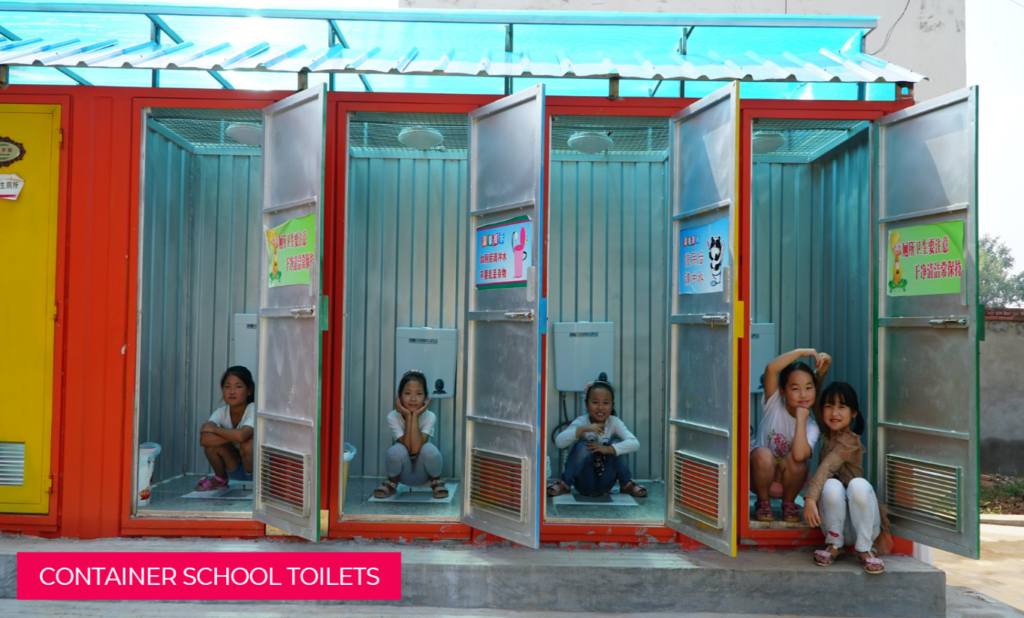
Photo source https://www.worldtoilet.org/rainbow-school-toilet/
Norway
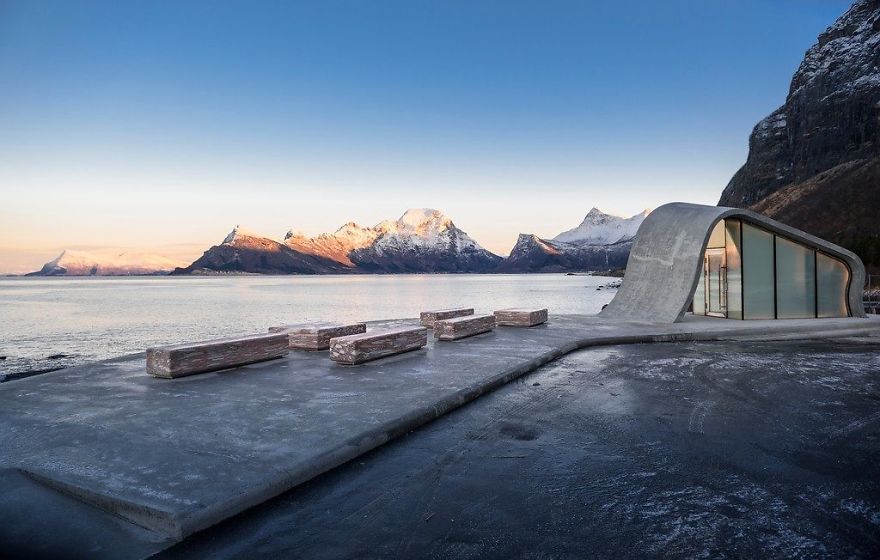
The public toilets reopening in Cambridge city centre this weekend:
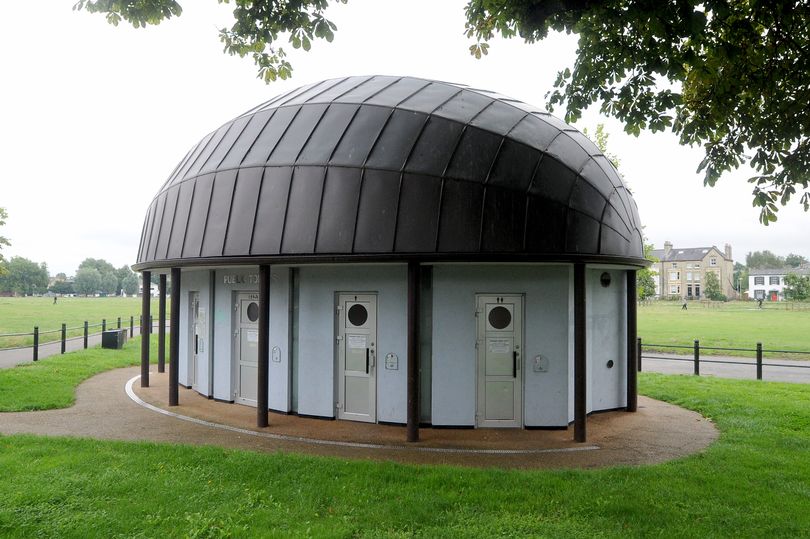
Venice Italy
https://europeforvisitors.com/venice/articles/public_toilets.htm
Carry change for toilets, which often have turnstiles at the entrances. Public WCs of AMAV, the Venice sanitation authority, charge a mind-boggling €1,50 unless you have the Venice Connected pass. Larger museums (such as the Doge’s Palace) have attended restrooms with posted fees. In other museums and galleries, toilets are often free.
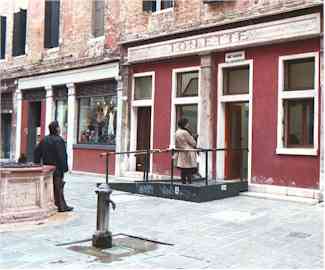
Malaysia
https://says.com/my/imho/please-stop-doing-these-in-public-toilets
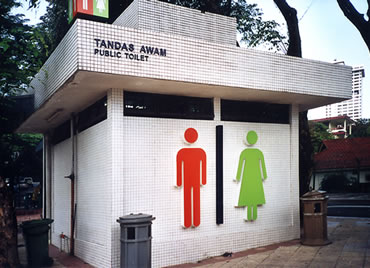
India
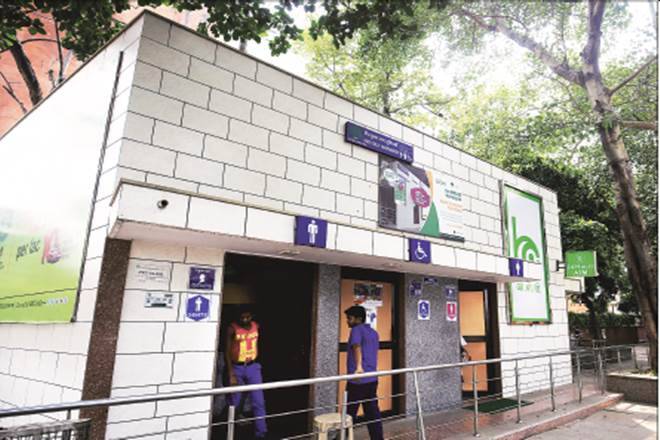
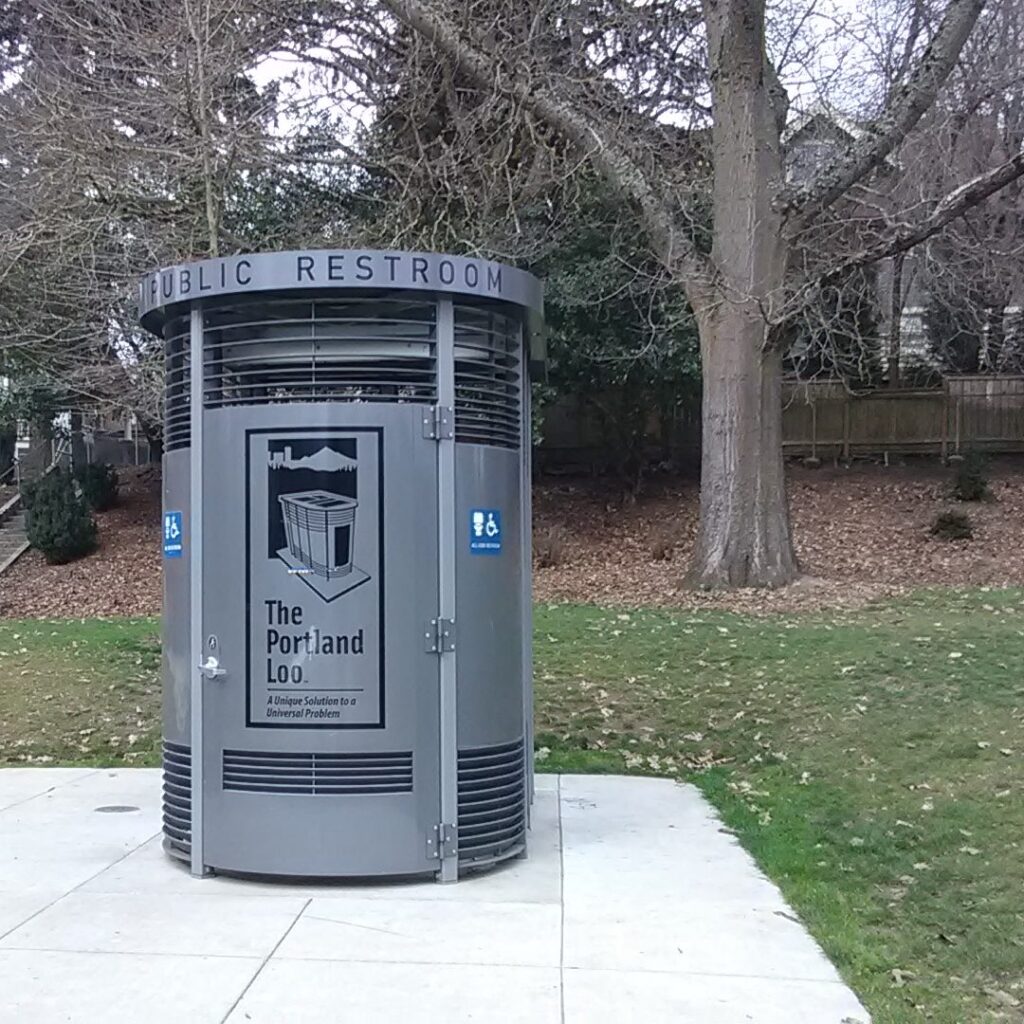
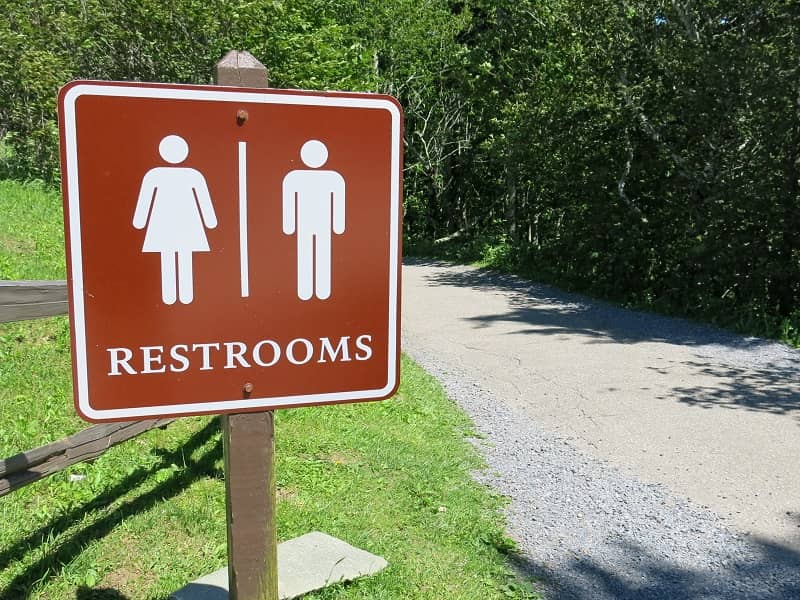
Tadao Ando
Tadao Ando creates a circular public toilet surrounded by cherry trees in Tokyo
source: https://www.dezeen.com/2020/09/14/tadao-ando-toilet-tokyo-jingu-dori-park/
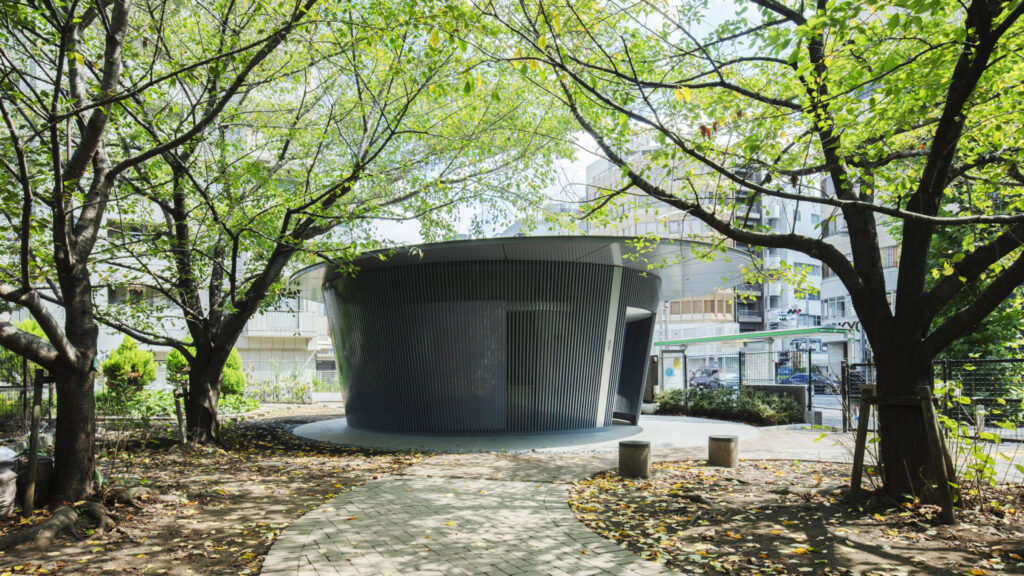
Pritzker Prize-winning architect Tadao Ando has completed a circular toilet in a Tokyo park as his contribution to the Tokyo Toilet project.
Built-in Jingu-Dori Park, the toilet was created as part of a scheme run by the non-profit Nippon Foundation to upgrade public facilities in the city’s downtown Shibuya district.
The initiative has already been seen by toilets built by Ando’s fellow Japanese Pritzker Prize-winners Fumihiko Maki and Shigeru Ban.
Surrounded by cherry trees in a small park around a five-minute walk from Shibuya Station, Ando derived the toilet’s shape from his desire to create a structure that enhanced the park.
“I sought for this small architecture to exceed the boundaries of a public toilet to become a ‘place’ in the urban landscape that provides immense public value,” said Ando.
“Using this clear and simple reasoning for the concept of this structure, I chose to utilize a circular floor plan with a spanning roof and engawa [Japanese porch].”
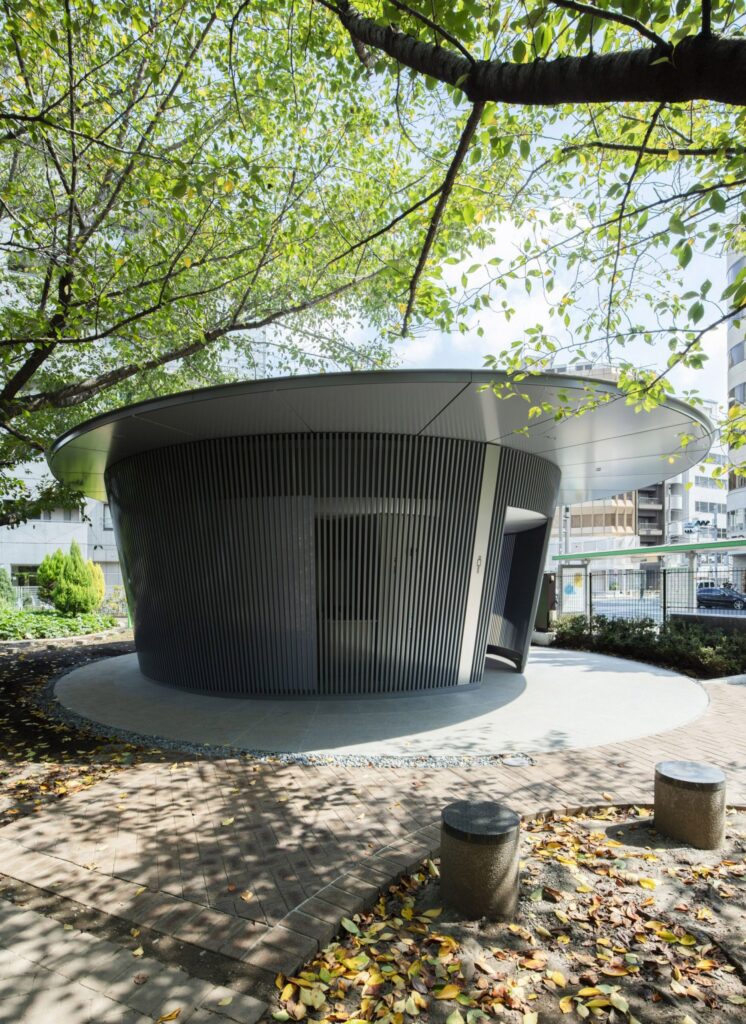
The circular toilet block, which contains a male, female, and accessible cubicle along with external sinks, is wrapped in a wall made from vertical metal louvers. This wall creates privacy while letting air circulate.
The whole structure is covered with an angled roof that overhangs the toilet to provide shelter.
“It was vital for me to make a space that was comfortable and safe,” said Ando. “Visitors can move inside a cylindrical wall of vertical louvers to feel the comfort of the wind and light from the surrounding environment,” he continued.
“A feeling of safety will be emphasized by the free and centripetal circulation which passes through to the other side. This toilet tucked away in the greenery that is Jingu-Dori Park will be known as ‘Amayadori’.”
Ando’s toilet is the sixth to be completed as part of the Nippon Foundation‘s Tokyo Toilet project. Shigeru Ban’s toilet design comprised a pair of transparent blocks, while Fumihiko Maki topped his toilet block with a “cheerful roof”.
Nao Tamura based her bright red triangular toilet block on the Japanese craft of Origata and Wonderwall referenced primitive Japanese huts for its design. In total 16 toilets are planned as part of the project.
Photography is by Satoshi Nagare, courtesy of The Nippon Foundation.
by https://www.wim-wenders.com/news/
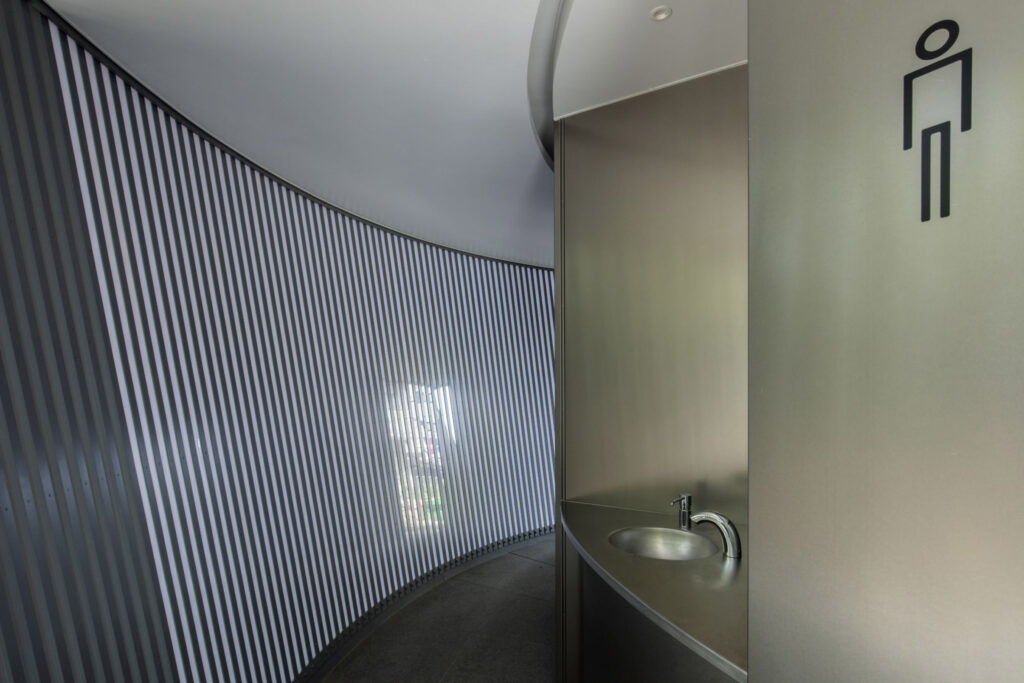
Harvard:
